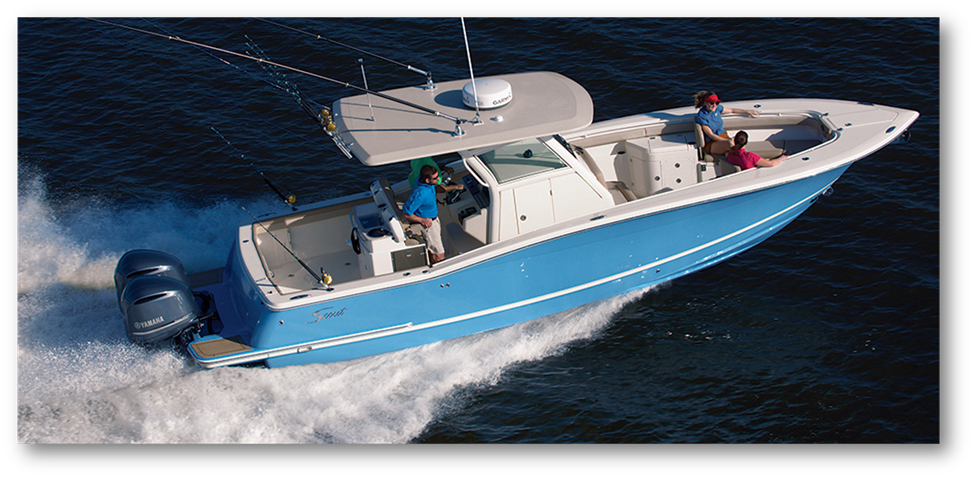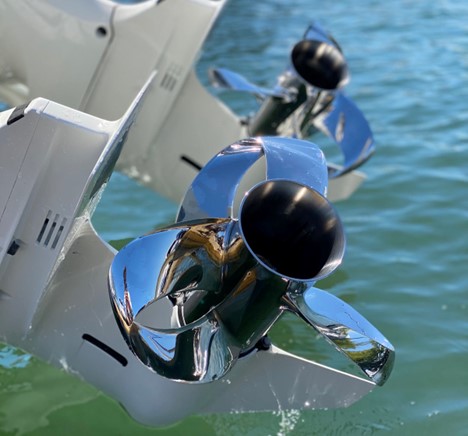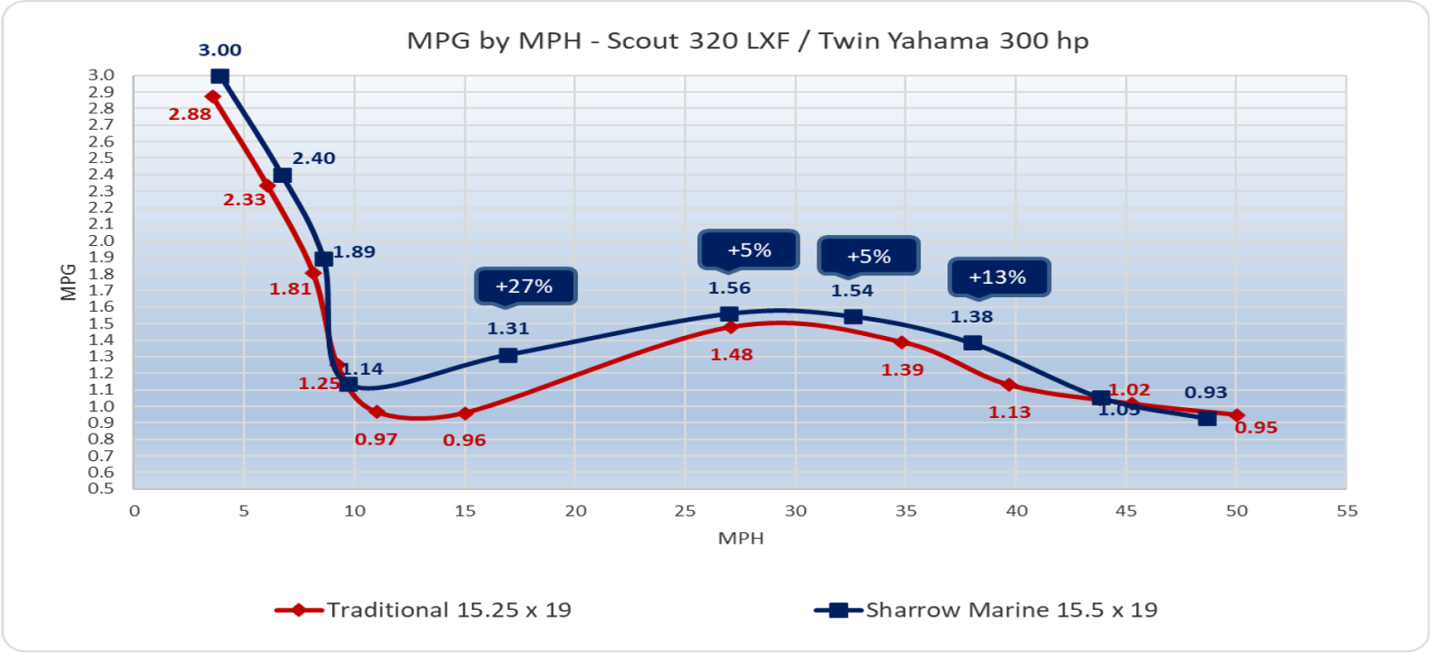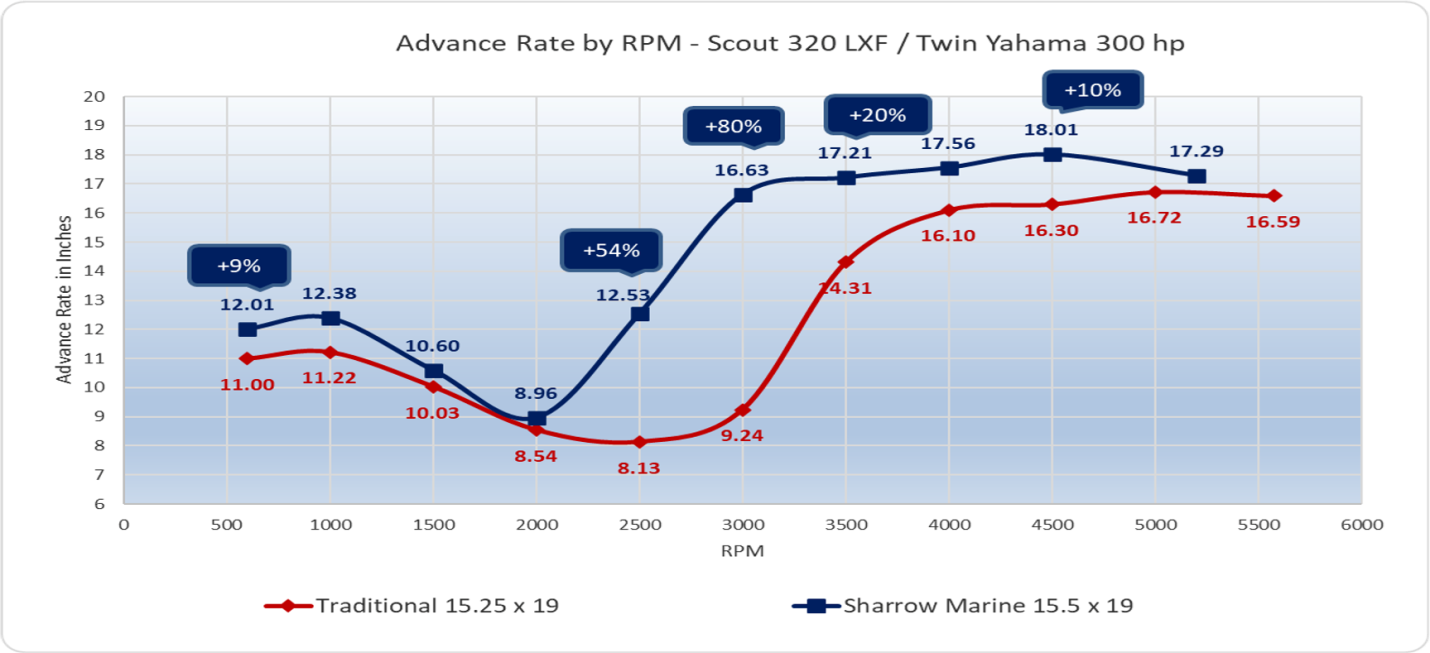New Sharrow Test: Scout 320 LXF
New Sharrow Test: Scout 320 LXF Faster, More Fuel Efficient with Sharrow TrueAdvance Propellers
The Scout 320 LXF is a premium class center console with a 32’ (9.75 m) LOA and a beam of 9’ 10” (3.0 m). It weighs about 10,000 lbs (4535.9 kg) including engines, hardtop, fuel and basic gear. It’s rated for up to 700 hp. The test boat was equipped with twin 300-hp Yamaha outboards.
Sharrow engineers first tested the boat with stock Yamaha 15.25” x 19” SS three-blade propellers, then switched to Sharrow 15.5” x 19” propellers. The results were impressive.
Like most boats in class with twin outboards, the Scout is least efficient—burning the most fuel for a given distance--at the point between running as a low speed displacement hull and being fully on plane.
As the chart shows, the boat begins to “squat” at 2000 rpm, 9.2 mph with the conventional props and 9.7 mph with the Sharrows. By the time the engines reach 2500 rpm, the boat is traveling only 11.0 mph with the conventional propellers, but jumps to 17.0 with the Sharrow’s—55% better.
The speed advantage is most pronounced at 3000 rpm, where the conventional propellers, still struggling to bring the boat on full plane, were at 15.0 mph, while the Sharrow propellers had accelerated it to 27.0—an 80% advantage. The Sharrows maintain some advantage all the way to WOT at 48.7 mph. The traditional props were slightly faster at full speed, reaching 50.1 mph.
Sharrow propellers also show a significant advantage in fuel efficiency at what might be a fast trolling speed between 1500 and 2000 rpm, 8.6 to 9.7 mph with the Sharrows. This is a speed typical in trolling artificial lures for blue water species like wahoo. The Sharrow’s peak at 1.31 mpg was 27% better than the conventional propellers in fuel efficiency. Between 3500 and 4000 rpm, the new loop-propellers were 13% better than traditional props.
The Sharrows continue to show an advantage all the way to 4000-4500 rpm, covering the likely cruising speed for this combination. Better fuel efficiency not only cuts boating costs, but also increases the safe range of the boat.
The “advance rate” is the calculated distance propellers push the boat for each revolution. It typically approaches the pitch at wide-open throttle. The tests showed that the Sharrows came closer to their nominal pitch at all rpm but had the greatest advantage, 80%, at 3000 rpm, where they pushed the boat forward 16.63” per revolution, while the traditional props only advanced 9.24”.
At 4500 RPM the Sharrow props advanced 18.1" for every 360 degree revolution, or were 95% efficient. The optimum blade advancement for the traditional propers were 16.72" at 5000 RPM, and were 88% efficient. That percentage is not unusual for old technology props.
In short, Sharrow propellers deliver significantly better speed and fuel efficiency in the low and mid ranges where most boats are run most of the time. Users also report less noise and vibration at speed as well as better control around the docks.
Sharrow propellers can be custom-tuned to a wide variety of outboard boats, and a recently announced partnership with VEEM propellers will also provide propellers for inboard-powered yachts and commercial vessels.




